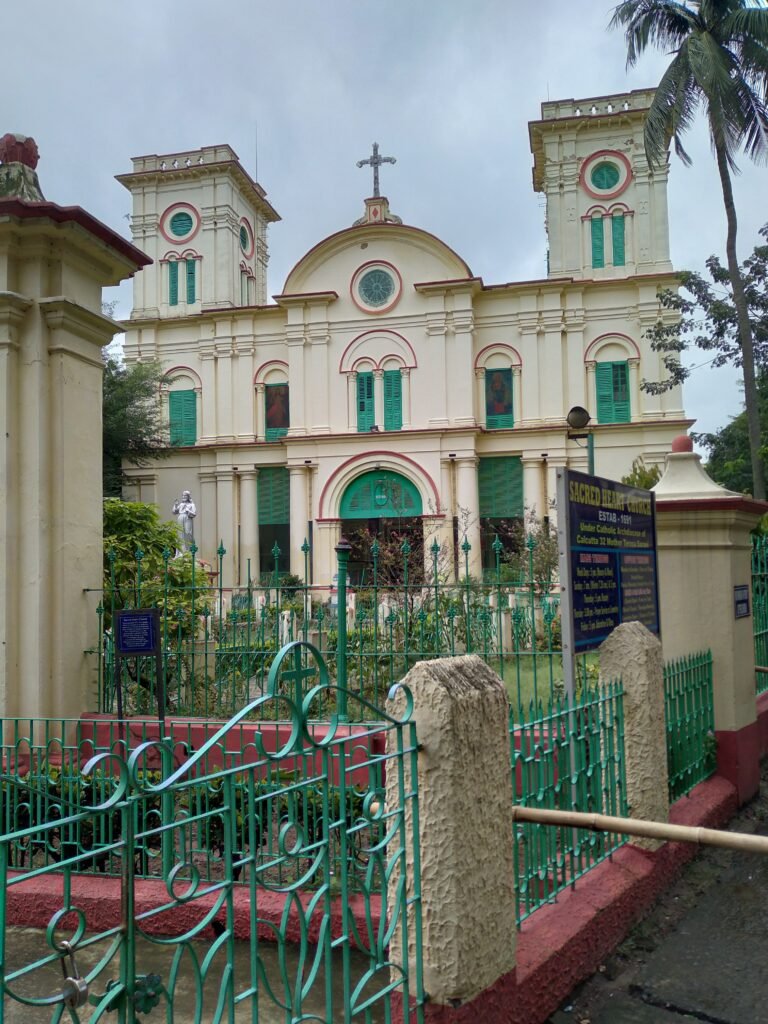Welcome to the unique town of Chandannagar, ‘my present dwelling place.
Chandannagar

The Origin of Chandannagar
As emerges from the pages of history, this town is a union of French and Bengali culture and architecture.
Situated in a serene view of river Hooghly, the Chandannagar 1673 was born by the merger of three villages Boro in the North, Khalisani in the West, and Gondalpara in the South. There are different views on the name of Chandannagar. To the north of this town, there was a Chandi Mata temple in Borai Chonditala, built in the name of Chand Soudagar and Srimant Saudagar. The village around the temple was called Chandinagar.
The French, however, due to their accent, spelled it Chandanagore.
There are a few other myths also. From the jetty, the bent of the river roughly looks like a half-moon, which inspired people to call it Chander Nagar. In Bengali, the moon is called ‘Chand.’ The city was once trendy for Sandalwood (In Bengali, ‘Sandalwood’ is called Chandan Kuth), which could be another possibility to name the place Chandanagar.
French access to Chandannagar
If we look back on the colonial history of Chandannagar, we will find that the French first entered Chandannagar in 1673. But that was accidental.
Portuguese (Privateers) stepped into the ‘Hooghly’ district to flourish their business (maritime trade), much to the distress of the local people. However, the French and Danish were very compassionate to the local people. They contributed to upbringing them with knowledge and education, and, even at times, they were tacit saviors to freedom movement revolutionaries. By and large, the French held a democratic view.
The accidental maiden voyage of the French Ship to ‘Hooghly.’
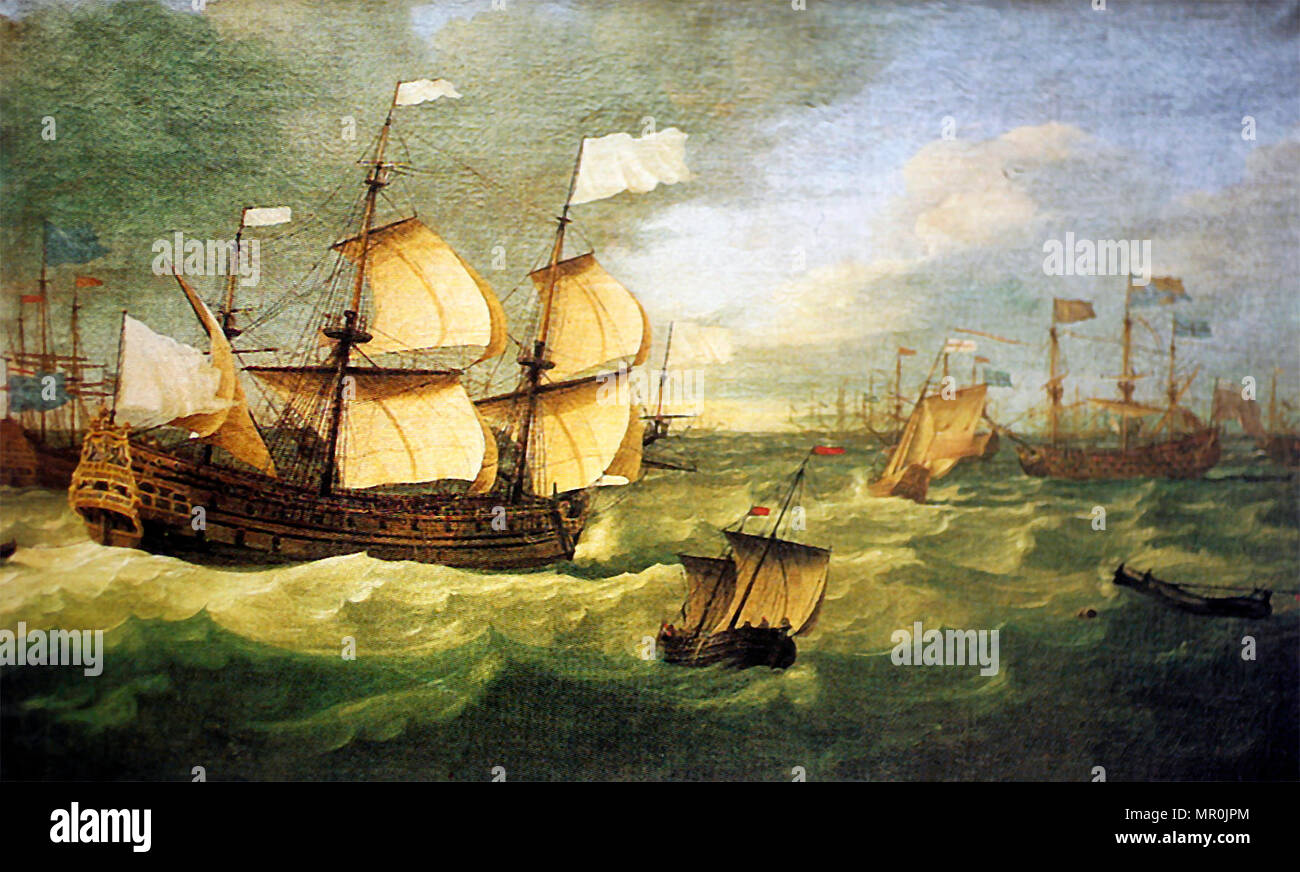
On delving into a related digital document (courtesy: yourarticlelibrary.com), it is found that a French ship called Fleming while sailing from Santhome to Mylapore, strayed from its fleet towards the Balasore trade route.
The French ship (‘Flemen’) was intercepted by a Dutch ship. The Dutch ship brought ‘the Flemen’ to the ‘Hooghly’ river. Later, the Dutch released the French ship at ‘Hooghly’ following an order from the Moghal kingdom.
The French attempted to gain a foothold in the present Taldanga of Chandannagar. But the French initially had a setback in business. They faced constant threat from the Dutch, who had a predominance in adjacent Chinsurah. Succumbing to the Dutch threat, the French traders quit the place.
However, French traders later bounced back to establish trade in India by 1688, with the Farman (Farman is the Moghal constitutional term for approval) of the then Moghal emperor. Ibrahim Khan, ‘the Nawab of Bengal’ under the Moghal regime, gave a green signal to French traders for using Chandannagar as their trading center.
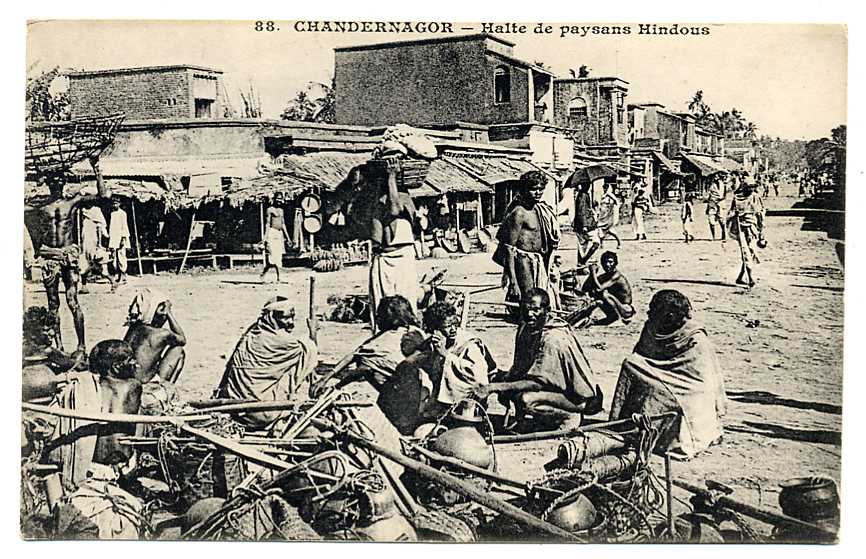
Before the arrival of the French, the people of Chandannagar made their living by fishing and cultivating. However, the French colonial people had given Chandannagar a facelift in its industry, architecture, and art and made Chandannagar stand on the threshold of peace and prosperity in its’ colony days’.
Revolutionary Hub:
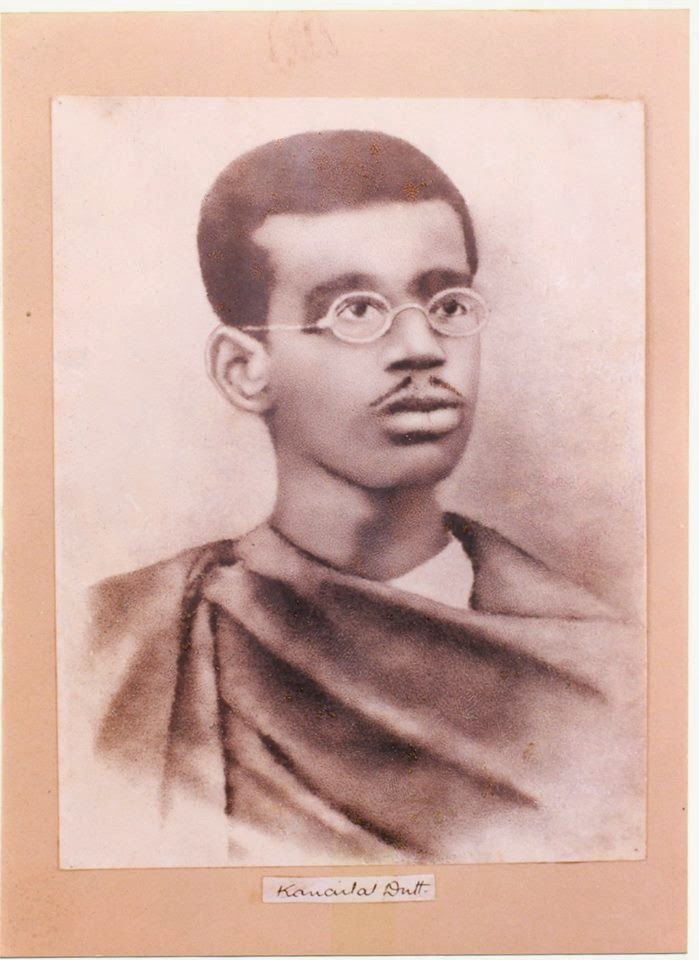
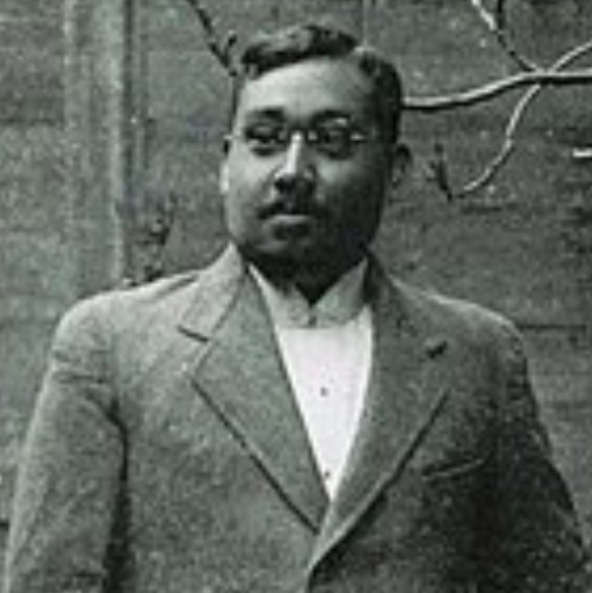
Though both of them shared common family names, they came from two distinct states of India.
Another commonality between the two was their strong connection with Japan.
And both were friends of Japan and were the fundamental forces behind the formation of the Indian National Army (INA), the Azad Hind Fauz, which was floated to free India from the colonial rule of Britain.
And both died in the same year, too – in 1945—one in Japan, another in Taiwan.
Chandannagar, being a French colony, was beyond bounds to the British authorities. So this place grew into a popular rendezvous for freedom fighters during the independence movement. The area became a haven for revolutionaries of the freedom movement.
Affability of colonial French to Chandannagar: Views of Dr. Kunal Sen and Neline Mondal

In an informal chat, noted educationalist of Chandannagar, Dr. Kunal Sen, affirmed to Unveil. Press that there was not an iota of resentment from natives of Chandannagar against the French rulers during the colonial days.
Dr. Sen said that the French rulers had never harassed the revolutionaries, taking refuge in Chandannagar. “In the mindset of local people at that point, the British were actual rulers. And they [local people] were subservient to the British and not the French,” stated the former principal of Government’ Banga’ Vidyalaya, Chandannagar, and presently a professor at ‘KGP’ College, Kola Ghat, Midnapore.
But ‘Unveil. Press’ got access to digital documents (courtesy: BYJUS.com) to learn that, interestingly enough, Chandannagar protested against French colonial rule only after the British had left India. It had driven the French ruler to conduct a referendum. In the referendum, 97% voted in favor of the inclusion of Chandannagar in the territory of India.
The poll verdict bears out that Chandannagar people at a later stage were inclined to throw off the shackles of French colonialism, especially when Britishers almost freed the rest part of India. The French ruler acknowledging Chandannagar sentiments allowed its merger with India in 1950 (see table below at the end of the text for the chronology of the event).
When the British left India, it was almost apparent that the French would have to go sooner or later, but France was in favor of self-determination in the establishment by way of a referendum, and this was also accepted by India (source for this para in particular: website of Institut Francais de Pondichery)
Nevertheless, the French and Chandannagar lost no love between them. On the contrary, the pain of parting was perceptible. When the French were leaving Chandannagar, people were in tears.
Regarding British Police, Dr. Sen said, “Yes, being mightier in military power, the British Police overstepped its jurisdiction and entered Chandannagar to arrest revolutionaries. The killing of Makhan Lal Ghoshal at Chandannagar by British Police Commissioner Charles Tegart was a case in point.”
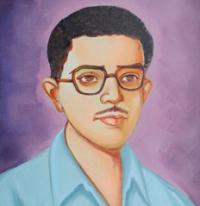
Revolutionary Makhan Lal Ghoshal, before his death, remained underground in Chandannagar to escape the British police.
,

Dr. Sen was not alone in his views. Neiline Mondal, a heritage conservationist, scientist, French language teacher, and documentarian, echoed the same sentiments.
“French are always liberal and loveable. They loved Bengali art, culture, and painting, and like Bengali, they loved adda at their leisure (in Bengali, adda means chatting and in Hindi gup-shup kurna),” said Neiline.
Neline is a French-speaking Belgian National and is a daughter-in-law of the renowned Mondal family of Gondalpara Chandannagar.
Known for her outspoken views, Neline said, “about the referendum, there was enormous malpractice in it. Ninety-seven percent vote in favor of the merger of Chandannagar is not reflected in reality. And out of that, another vote was never announced, and people did not know about it,” asserted Neline. She quoted the document “Chandernagor ou le lit de Dupleix” to substantiate her views.
Neiline also opined that if, in the battle of Palasay in 1757, Siraj-ud-Daulah ‘the last independent ruler of Bengal’ got cent percent military support from the French Government, perhaps the outcome of the war could have been otherwise. So maybe we would have a different history of India today. But the French government did not fully support”, opined Neiline.
The defeat of Siraj-ud Daulah paved the way for the British to become India’s most significant economic and military power. Moreover, the victory facilitates the East India Company’s complete command over Calcutta and Bengal.
The decisive battle of ‘Palassay’ was fought on 23 June 1757 between the British East India Company troops led by Robert Clive and Siraj-ud-Daulah and his French allies.
Unveil. Press tried to approach Professor Basabi Pal, Head of the French Department of Government College Chandannagar. Professor Pal is said to be an authority in French colonial history.
But she informed Unveil. Press via e-mail that she is in the midst of preparatory work for University Exams and thus unable to spare time. However, she has assured to speak with Unveil. Press later.
Views of local people about the colonial French
Unveil. Press spoke to the people of different age groups in Chandannagar’s strand last Friday (29 July 2021) and on Monday (2 August 2021) at Boraichanditala of Chandannagar.
Suman Chatterjee, a youth in his late 20s, was full of praise for the French. “The French, no doubt, have sown the seeds of education in Chandannagar. So many reputed schools, like Joseph convent, St Thomas, Kanailal, Dupleix college, etc., all came up during colonial days. The beautiful strand and its parallel road, greeneries around, all you are looking at now, are French’s gift. Even heard from our fathers and grandfathers that Kolkata on those days could not match against Chandannagar’s excellence in colonial days.”
In her late 40s, a lady running a stationery shop adjacent to Kanai Lal school said, “Though the French had left seven decades ago, people still loved them for their commendable work in Chandannagar.”
Ramesh: “Chandannagar’s love for French was manifested in the 2018 World Cup Football final when almost the entire town watched the final on TV with bated breath when France took on Croatia. France’s flags were fluttering high, and the jubilation of Chandannagar was beyond the word when France won the finals. However, the Chandannagar strand wore a festive look that day”, recalled Ramesh, whose livelihood depends on ferrying passengers in toto between Chandannagar station and Chandannagar strand.
In a straightforward reply, Tarun Bairagi: a youth in his early 20s, said he cannot comment upon what he sees today as a modified town and has no idea of colonial days. “Better you talk to an experienced and Senior person,” the youth quipped.
Hena Sen: The octogenarian lady from the distinguished Sen family of Chandannagar, while recalling the good old days, said the excellence of today’s Chandanagar’s civic amenities, roads, and cleanliness has its foundation in French Administration.
Sen, an alumnus of famous Prabartak Sangha’s Nari Mandir, also said administrative work in colonial days was carried out in the French language. “Knowing the French language was necessary, and one had to opt for the French language compulsorily in school in those days. Security was also very tight then. Strangers were not allowed to enter the town at odd hours of the night,” said Sen.
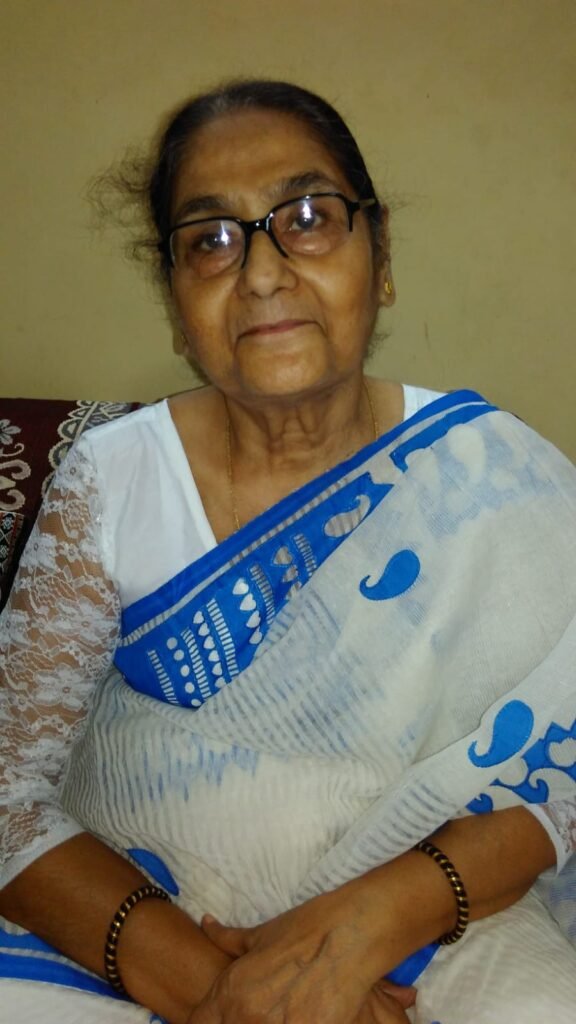
Ajit Kumar Ganguly: Tracking down the 94-year-old Ajit Kumar Ganguly at Boraichanditala remained a prized possession to ‘Unveil. Press’ The nonagenarian ‘a retiree’ from Government Agriculture department’ has closely watched the French people.
Having spent his early childhood in Agra, he came to Chandanagore in 1936. “In my school days, I and others Gheraoed the French administrator, demanding the removal of Dupleix’s statue from school and replacing it with revolutionary Kanai Lal Dutta. But the administrator did not turn wild. On the contrary, he was polite and soft-spoken, though he refused to bow to our demands. Today you found a bust of Kanailal in school because of our movement in school days. But whatsoever it may be, the French overall was lovely”.
Readers may note that Dupleix was the first French Governor and was the Administrative head.
Straining his memories from the past, Ganguly went on, “In those days, the town’s population was far less than today. The town was clean and tidy. “Every night, the city’s main roads were cleaned with water by street cleaners.” The French also honored the eminent Indian. “I still remember the French administration gave a guard of honor to Professor Charu Chandra Roy at his funeral.” Professor Charu Chandra belonged to erstwhile Suleix college (now Government Chandannagar college)
“Another city’s fascination was for its wine. People from Kolkata and other far-flung places used to come for the wine. It was not hooch but quality wine”, says Ganguly with a grin.
Ganguly, at this age, writes books with the help of a transcriber. The books are nicely stacked in a glass shuttered rack by his bed. Most of them are on patriotism, more on the view of Netaji Subhash Chandra Bose. The latest one has already gone to press.

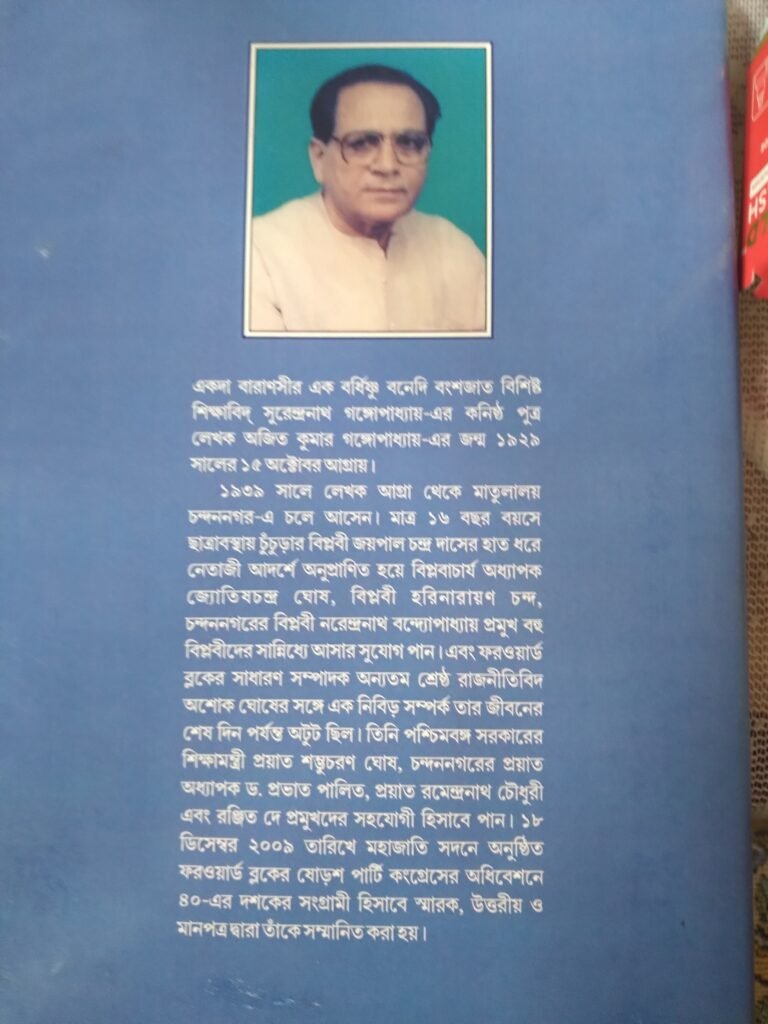
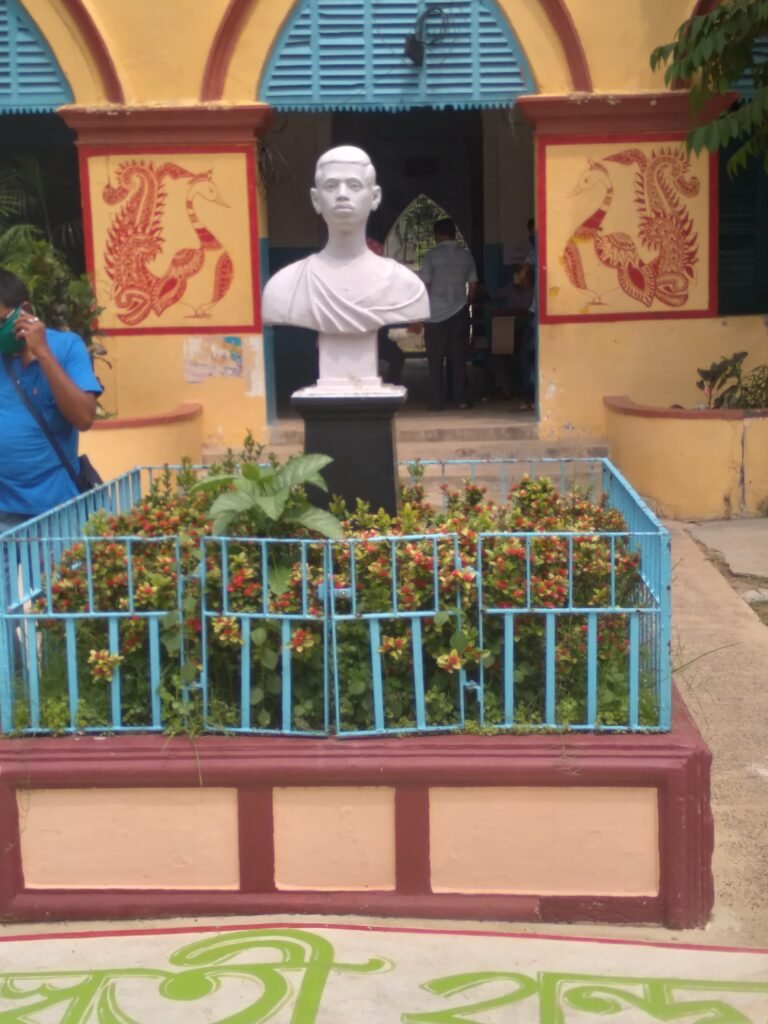
Chandannagar: Important places and personalities that need special mention
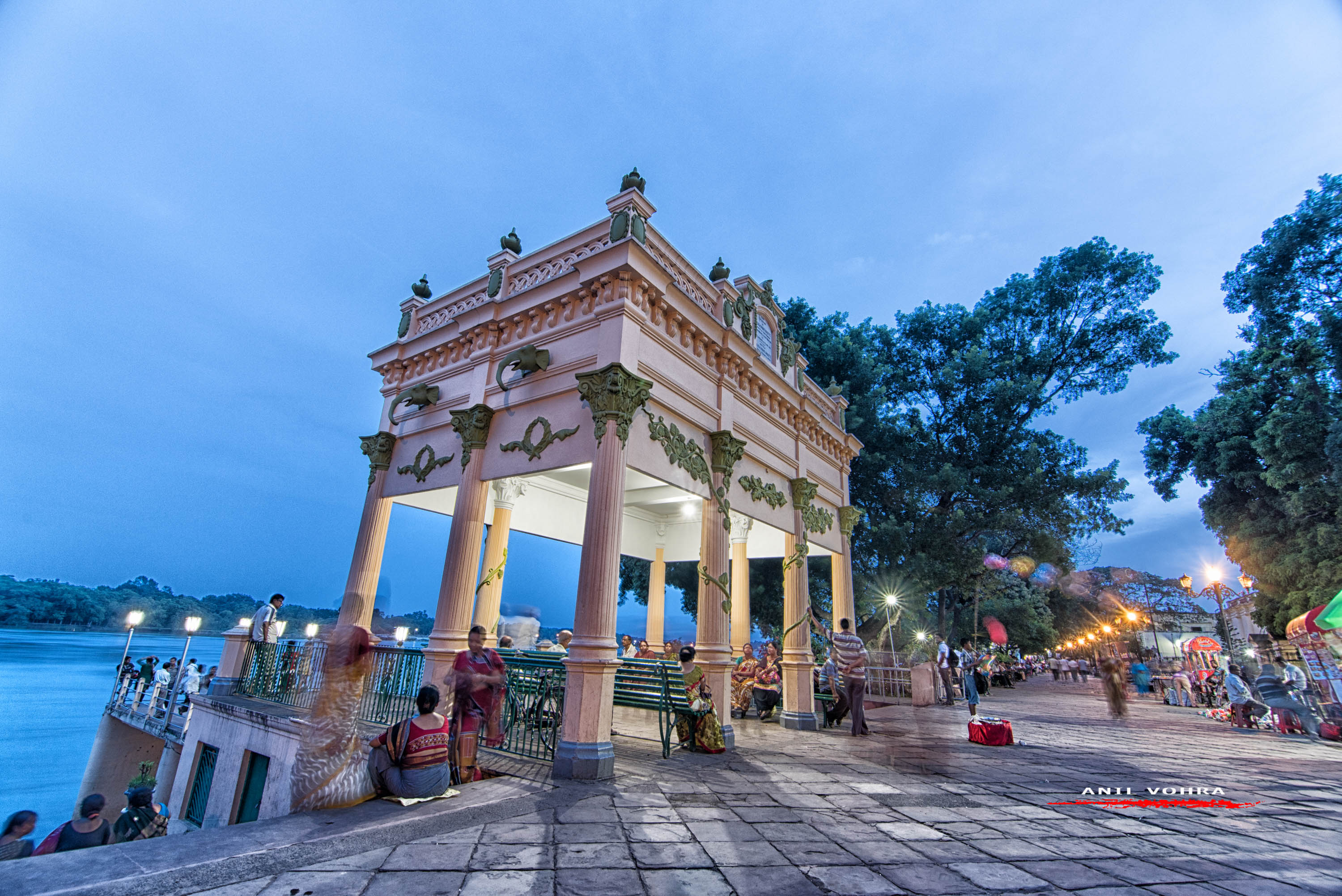
Chandannagar Strand:
Chandannagar strand is the most popular tourist destination. French rulers made it during the colonial days. It is on the banks of the Hoogly river.
The strand extends to a length of one kilometer. The entire strand is under the cool shadow of leafy Banyan trees. You can chill out here amid the fascinating river Hoogly. You can also watch the sunrise from the jetty.
In the evening, if you visit here, you will find the Strand in full occupancy. Again, people of all ages enjoyed chatting and looking around.
Mondal Mansion:
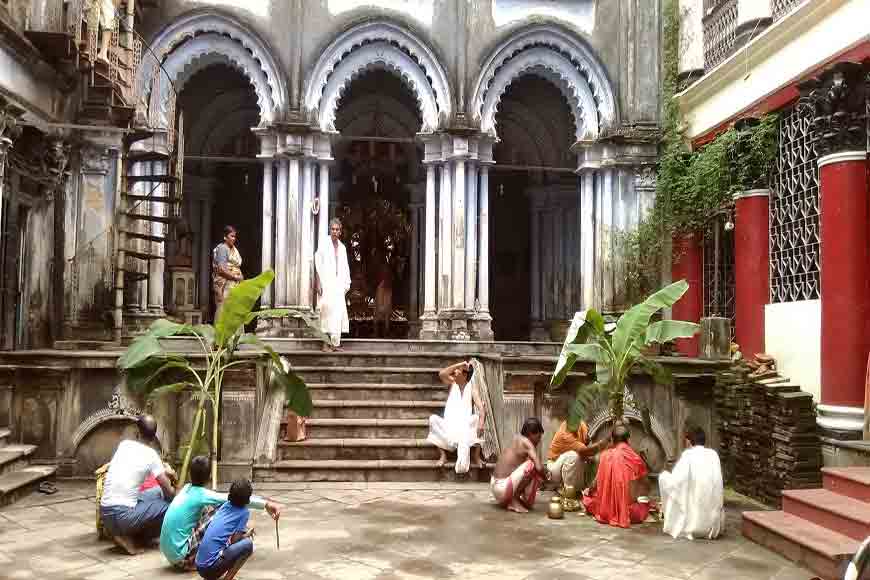
Another heritage house is the 277-year-old Mondal Mansion. Neiline Mondal, the daughter-in-law of the renowned Mondal family, told Unveil. Press that the house was built in 1741. It is now the oldest surviving house in Chandannagar, claimed Neiline. “Mondal’s family were business people. Mondals’ have their private army employed for escorting ships and protecting from pirates”.
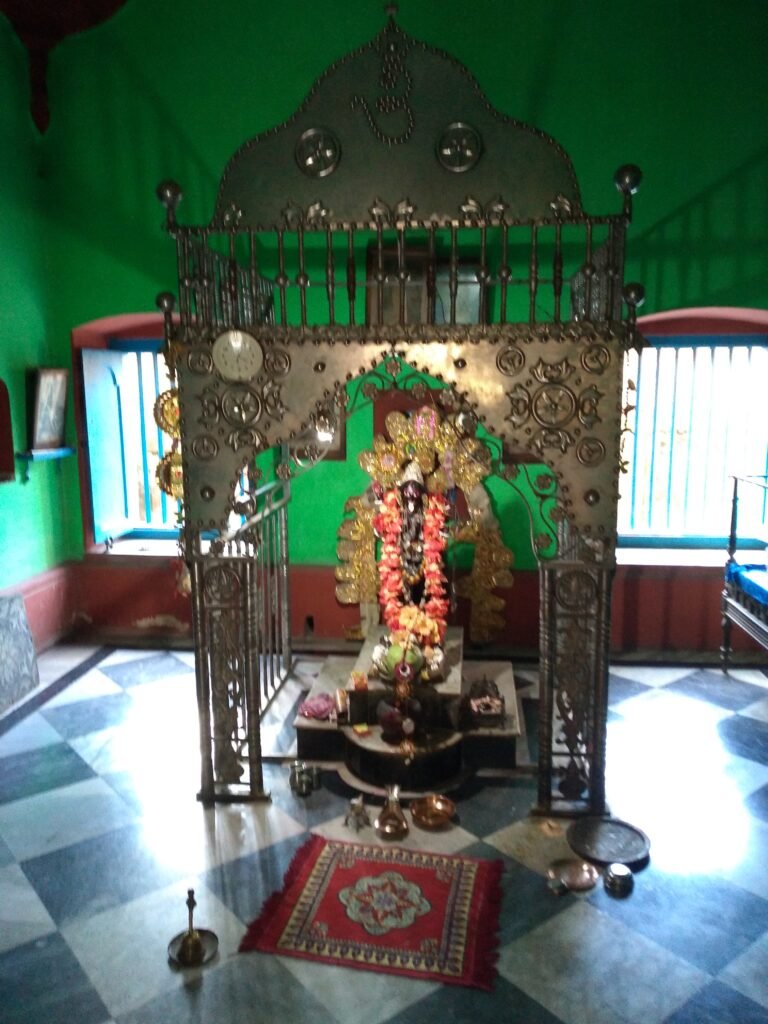

Patal Bari’: A formerly old Mercantile office for the Navy was housed here. The Patal Bari is on the right side of the strand. ‘Rabindranath Tagore’ and Ishwar Chandra Vidya Sagar spent quality time here in different spells of their lives. It is private property, and visitors are not allowed inside. Patal Bari is also a heritage house of Chandannagar. The house represents the magnificence of a colonial house. It has a cast-iron staircase.




Restoration of Heritage Residing Houses: If you ever visit the residential area of Chandannagar, you will find many old houses having a mix of Indian and French architectural blends. Old houses look European from the outside but have a distinguished Bengali-style courtyard and long verandah.
Plans are afoot to restore the heritage buildings, most of which are losing their charm, and some are in dilapidated states.
Most owners are not financially sound to keep up their maintenance and retain their heritage characteristics. As a result, many old buildings from Colonial times have been demolished in recent times, and in their place, multiple complex flats are coming up.
” It took me years to have the registry building in Chandannagar declared a heritage building. The building is in pathetic condition. So I put across the necessity of stating the registry building as a Heritage building before the authorities. The authority has now approved. But don’t know what concretely they will do,” apprehended Neilin.
The present registry building was the first French court of Indian built-in 1875.

The Financial Express has recently reported that the West Bengal Government and France signed a memorandum of understanding with an active engagement of the French Consulate to work in this direction.

Fort at Barasat: Taking a lesson from the defeat they suffered at the hands of the British in 1757, the French, in 1762, built a fort around Barasat, ‘the entry point of Chandannagar.’ The original fort is still standing at Barasat with the famous slogan of the French Revolution, “Liberty, Equality, and Fraternity inscribed on the stone pillars of the gate.

Indra Narayan Choudhury and Nanada Dulal Temple: Amongst the notable Indian personalities of the Colonial period was Indra Narayan Choudhury, who, with his sheer intellect, rose to the rank of ‘Dewan’/Tax collector in the French Administration. He was very wealthy, and in 1740, he established the temple Nandadulal. The temple is well maintained.
Many local cultural programs are often held here with the permission of the concerned authorities. When the British attacked the French in 1757, the original black deity of Lord Krishna was destroyed by Lord Clive, who threw it into the pond. The relic was recovered from the pond later and preserved in the Chandannagar museum. The temple is in the style of the Bishnupur Tarakota temple.
Radhanath Sikdar: Calcutta-born mathematician Radhanath Sikdar resided at Gondalpara, Chandannagar. Radhanath Sikdar is credited for estimating the exact height of Mount Everest in 1852. Nevertheless, the mountain is named ‘Everest’ instead of Radhanath Sikdar.


According to the website www.history.com and Hindustime.com, Sikdar calculated the exact height of Mount Everest in 1852, while George Everest retired in 1843. Still, his successor, Colonel Andrew Scott Waugh, named the peak after Everest, who initiated the survey.
George Everest had favored native place –names as a surveyor and objected to Waugh’s proposal that the highest peak in the world is named in his honor.
In the memory of Radhanath Sikdar, a statue of Radhanath Sikdar has been installed behind the sacred church.

Moti Lal Roy and his association with Aurobindo Ghosh: Motilal Roy was a freedom fighter and a saintly person. Born on 5th January 1883 at Baraichanditala, Chandannagar, Moti Lal established the Prabartak Sangha to aid poverty-stricken children and distressed women. The Prabartak Sangha was also a hideout for many Freedom fighters. Moti Lal Roy died on 10 April 1959.
In the later part of his life, having been inspired by Rishi Aurobindo Ghosh, he took to spiritualism and decided to bow out of the ‘swadeshi movement’ gracefully. His principle was ‘stand on your own feet first’ before undertaking a ‘swadeshi’ movement. Nevertheless, he was deeply moved to see many freedom fighters dying unsung, uncured, and of starvation.
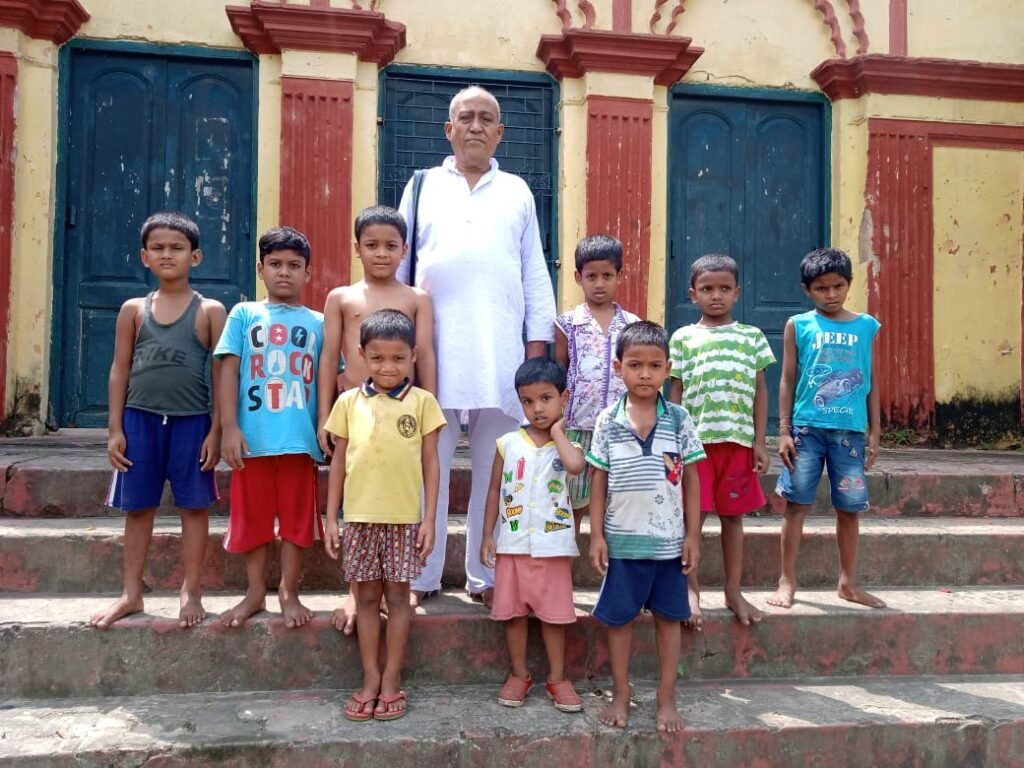
Pradip Banerjee, ‘Pracharak’ and treasurer of Prabartak Sangha, told Unveil. Press during later’s visit to Prabartak Sangha last Monday that Moti Lal Roy had provided refuge to many revolutionaries in Prabartak Samaj. All National Statesman like Mahatma Gandhi, Netaji Subhash Chandra Bose, Dr. Sarvapully Radha Krishnan, Bipin Behari Pal, Shyama Prasad Mukherjee, Rabindranath Tagore, Sharad Chandra Chattopadhyay, Nazrul Islam, Niharanjan Roy, Prafulla Roy, and many others came here.
“But Moti Lal had a close association with Aurobindo Ghosh. Aurobindo had given a new direction to his life”, said Banerjee.
Recalling an incident, Banerjee said Aurobindo Ghosh, Ulaskar Dutta, and Upendra Nath Bandopadhyay hid at Alipore of Kolkata, where the revolutionaries often had closed-door meetings to chalk out the plan of movement to corner the British. They secretly manufactured bombs and other weapons here”, informed Banerjee.
Banerjee continued, “Aurobindo Ghosh was the mastermind of all activities. Somehow, the British cops, acting on a tip-off, besieged the hideout. But Aurobindo Ghosh gave the police the slip. British cops fabricated him with charges that he was making a conspiracy to eliminate top British government officials in a secret meeting. A charge under section CRPC-302 had been thrust upon Aurobindo Ghosh. If proven, he was to hang till death. At this juncture, Barrister CR Das advocated him and, with his shrewdest argument CR Das won the case in the court, and Aurobindo Ghosh was exonerated”, recounted Banerjee.
“Meanwhile, an arrest warrant was again on the card. Sister Nivedita was closed to a daughter of a top British official. She Nivedita got a hint about the arrest warrant. She alerted Aurobindo.
“Aurobindo reached Chandannagar through a river route on the 10th of February 1910. But people, even at Chandannagar, were so much terrorized by the British that no one ventured him to provide a refuge. Chandanngar’s Fatakgora’s resident Shirish Ghosh then informed Moti Lal Roy. When Motilal came to know about it, he reached the crack of dawn on the very next day at Chandanagore’s Rani Ghat to pick up Aurobindo and bring him in a boat to Sarkar Ghat adjacent to Probortok Sangha. He kept Aurobindo secretly in his own house. Later he helped him to proceed Pondichary”.
A sea change took place in Aurobindo Ghosh’s thought process at Pondichary. He moved to spiritualism, shedding political life, and founded the Aurobindo ashram. He was, after that, known as ‘Rishi Aurobindo Ghosh.
For Motilal Roy, Aurobindo was always a revered personality. He got inspired by Aurobindo. Roy also took to spiritual life and spent the rest life in service to people.
Banerjee also said Motilal, in his ‘Sangh,’ provided free education to orphans and provided shelter for distressed women. The widows of Chuttagram, whose husbands sacrificed their lives for the independence struggle, were sheltered by Moti Lal. The tradition continues.
“We run a Higher Secondary school, including one for girls. Our school is under the West Bengal Board of Education”, said Banerjee. “To run the orphanage and other activities, we largely depend on donations from public and well-wishers,” added Banerjee.
Pointing out to some children, he said, ‘Unveil. Press’ that all children here are needy, even some of their mothers deserted their children, married again and leading separate lives, rued Banerjee.
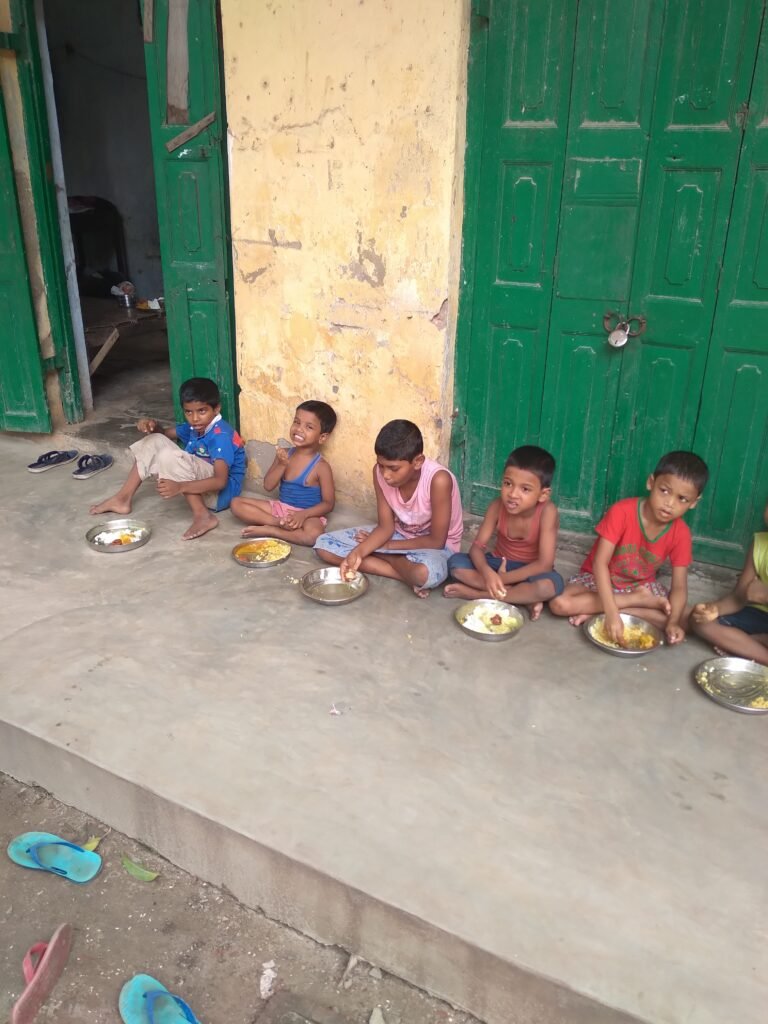





Harihar Sheth


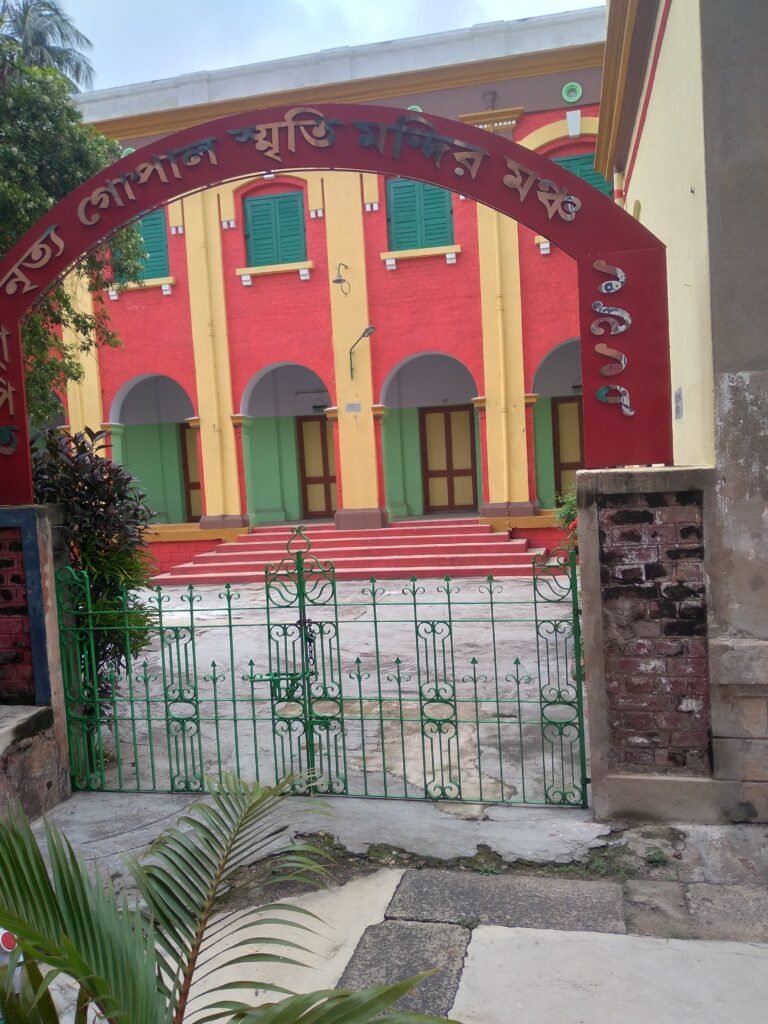
Barai Chanditala: Another place of historical significance in Chandannagar is ‘Barai Chanditala.’ Chand Saudagar and his brother Srimonto Saudagar came here to worship Goddess Chandi. They also established ‘Barai chandi’ mandir, a temple which, according to some, led to the origin of the name “Chandinagar’ and later to Chandannagar.

Heritage Church building: Colonial day Churches in Chandannagar



French architecture marveled in 1884 by building the catholic sacred heart church, and in 1720 built Chapel of St Joseph is a reflection of Portugueses’ ‘A+++ high grade’ classical architectural grandeur.
Sister Georgia, the duty-bound nun of St Joseph church, has shown the Unveil. Press, the chapel, explained Chapel’s significance and about 1861 established ‘Joseph convent’s contribution to spreading education in the region.

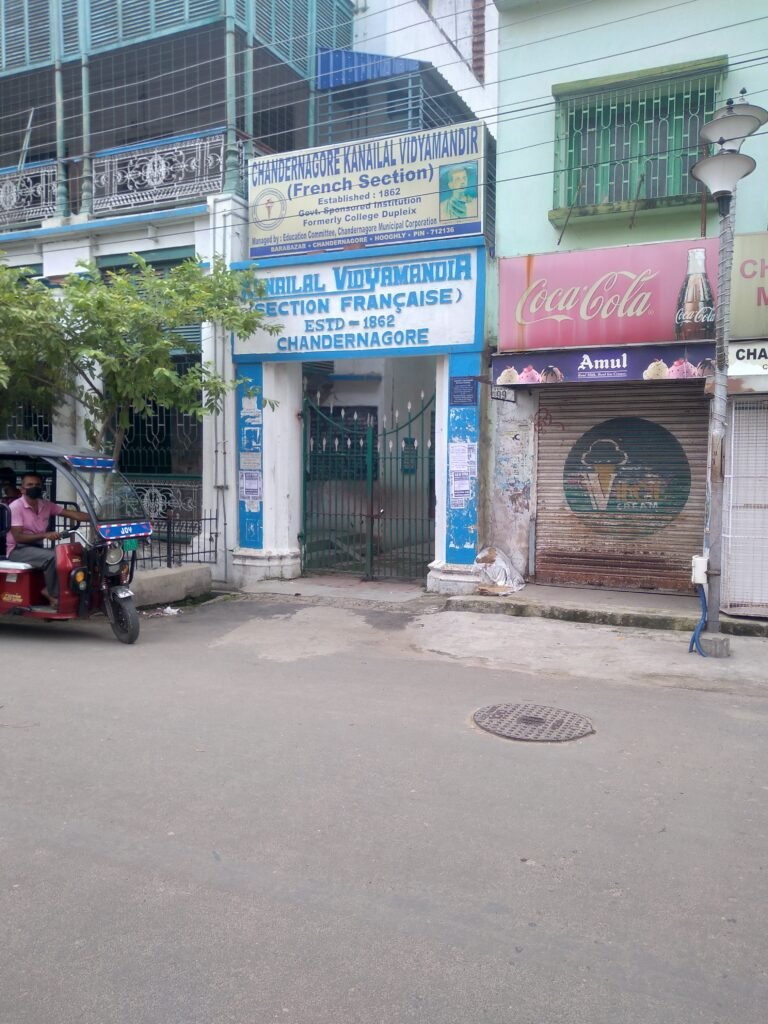

Chandannagar College: The college was established by Father M.Barthet as a school called Ecoles Saint Marie in 1862, and in 1867, it came under the Chandannagar administration. In 1901 it was upgraded to a college under the name Dupleix College. In 1908, the college was closed down for some conflict, but it was again revived in 1931 with the initiative of Charu Chandra Roy.
Charu Chandra Roy was a Deputy Director of Education in the French Administration. He was also said to be the Professor at the college. He later resigned from this post and joined the freedom movement. From 1931 the revived Dupleix college was housed in a new building beside the ‘Hooghly’ river (Chandannagar strand).
The college building has a majestic look and is an eye-catcher for passersby. In 1947, the college was renamed Chandannagar college.
After shifting Dupleix college to a new building in the strand in 1931, the original building in today’s Bura Bazar was converted into a school. Later in 1948 it was renamed Kanai Lal Vidya Mandir. Kanai Lal, also a freedom revolutionary from Chandannagar, was a student at the school.

Chandannagar court: The present Chandannagar Sub-Division Court also reminds us of the colonial days. It was built in 1876. The court was then a hotel named ‘Hotel de Paris, and beside it, there was another hotel ‘Hotel de France. French people used to go here for entertainment. It could not be ascertained from the available sources whether Indians were also allowed to go there.
Rabindra Bhawan Adjacent to the Strand, there is Rabindra Bhawan. Rabindranath presided over the 20th Century of Bengali literary congregation on the same site.


Museum: The present Chandannagar museum was established in 1961. It is also called a French institute. But it was built in 1731 during French rule. It was the residence of the first Governor-General of French, Dupleix, and successive governor-generals.
The museum gives an insight into the French Colonial days besides various other unknown and known facets of town. Unfortunately, the museum is presently closed to visitors because of the pandemic. Otherwise, it is open to the public from 11 am to 6 pm except for Thursdays and Saturdays.
Chandannagar was the administrative center of the French East India Company. The French divided Chandannagar into a white town (Ville Blanche) and a black town (Ville Noire). As the name suggests, French people used to live in the Black town, the Indians in the white town. The area around the present strand, Padri Para, Taldanga, was dominated by the French population. Indians resided in the Khalisani, Boro, ‘Gua’ Bagan, and Puroshree areas.
The affluent and Aristocats Bengali families’ lived in Gondalpara. Rakshit family, said to be an aristocrat and wealthy business family like Mondal’s, presently resides at Baddipratha in Chandannagar. ‘Durga Prasad Ghat, as described in the photo captions, was the Rakshit family’s contribution to the city. The Durgaprasad Ghat adorns the beauty of the strand.
Mainly, the French language was used by the colonial administration. Local people were also employed in administration work, but their participation in administration was less than those of Pondichery’s local people. For working in the French administration, knowledge of French was essential.
The French & English language of local people were relatively not as good as Pondichery people. This could be a reason for local people’s lesser participation in French administration (Source for this particular para: website of Institut Francais de Pondichery).
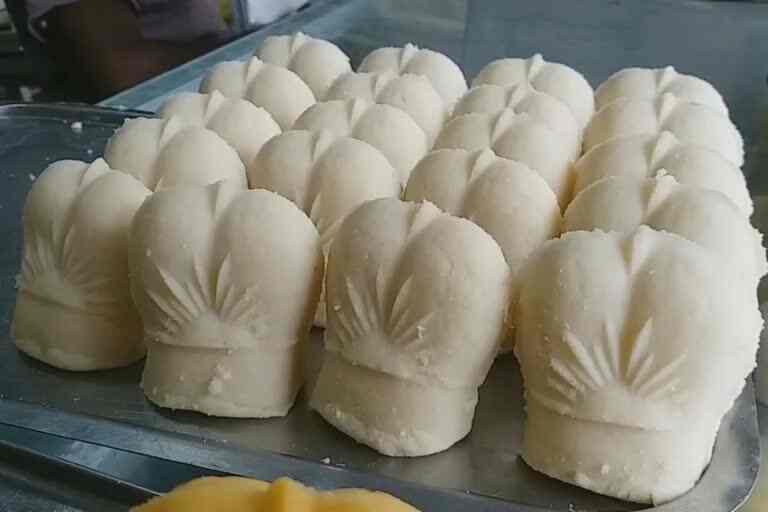
Jagadharti Puja and famous Jolbhora sweet: Chandannagar has garnered international fame for its glamour and glitter of Jagadharti Puja. The sweets of Chandannagar are also equally favorite. Jolbhora Sandesh is the most traditional sweet for which Chandannagar has acquired international popularity.
Conclusion: If you love history and heritage, if you are interested in mythology, if you want to enjoy the elegance of the Hoogly river, and above all, if you love to taste traditional Jolbhora, then never miss an opportunity to visit Chandannagar.
Summary of the story/comprehensive chronology of Chandannagar history at a glance in the tabular form:
| Sl No. | Event | Year | Remarks |
| 1 | The arrival of the first batch of French. | 1673 | It was accidental access of a French ship, “Flemen’. Before the arrival of the French, local people lived through fishing and cultivation. |
| 2 | Formation of Chandannagar | 1673 | As per the official record, Chandannagar, in 1673, was born out of the merger of three villages Boro in the North, Khalisani in the West, and Gondalpara in the South, although there are different views on the name of Chandannagar. |
| 3 | Permanent French settlement & establishment of French in the maritime business. | 1688 | Chandannagar started gaining facelift in industry, architecture & culture, etc. Kolkata in those days could not match Chandannagar in terms of prosperity. |
| 4 | British captured Chandannagar | 1757 | Defeat affected the commercial activities of the French colonial government. |
| 5 | Construction of fort at Barasat in Chandannagar. | 1762 | Fort was constructed taking lessons from the British attack in 1757. The fort of Orlon was destroyed by the British in the 1757 war. |
| 6 | Chandannagar restored by the French | 1763 | – |
| 7 8. | Again British captured Chandannagar Again British returned Chandanngar to the French | 1794 1816 | The outcome of Europe’s Napoleonic war. The defeat of the French in two wars had let down the commercial activities of Chandanagore. Chandannagar has now become a suburb of Kolkata. |
| Sl No. | Event | Year | Remarks |
| 9 | French colonial government intends to give Chandannagar to India | 8th June 1948 | The Government of the French Republic, in agreement with the Government of India, declares that it intends to leave to the populations of French establishment in India themselves the right to pronounce their future fate & future status. |
| 10 | Plebiscite held | 8 June 1948 | The citizen of Chandannagar voted in favor of the merger of the territory with India |
| 11 | Merger with India | 2nd May 1950 | The Govt. of India took over the administration (de-facto transfer) of Chandernagore |
| 12 | Incorporated with West Bengal | 8 May 1954 | The Government Of India accorded the necessary permission |
| https://www.unveil.press/wp-content/uploads/2021/07/IMG-20210704-WA0088-324×160.jpg | |||
| https://www.unveil.press/chandannagar-a-heritage-town/ | |||
https://www.unveil.press/wp-content/uploads/2021/07/IMG-20210704-WA0088-324×160.jpg
“





































